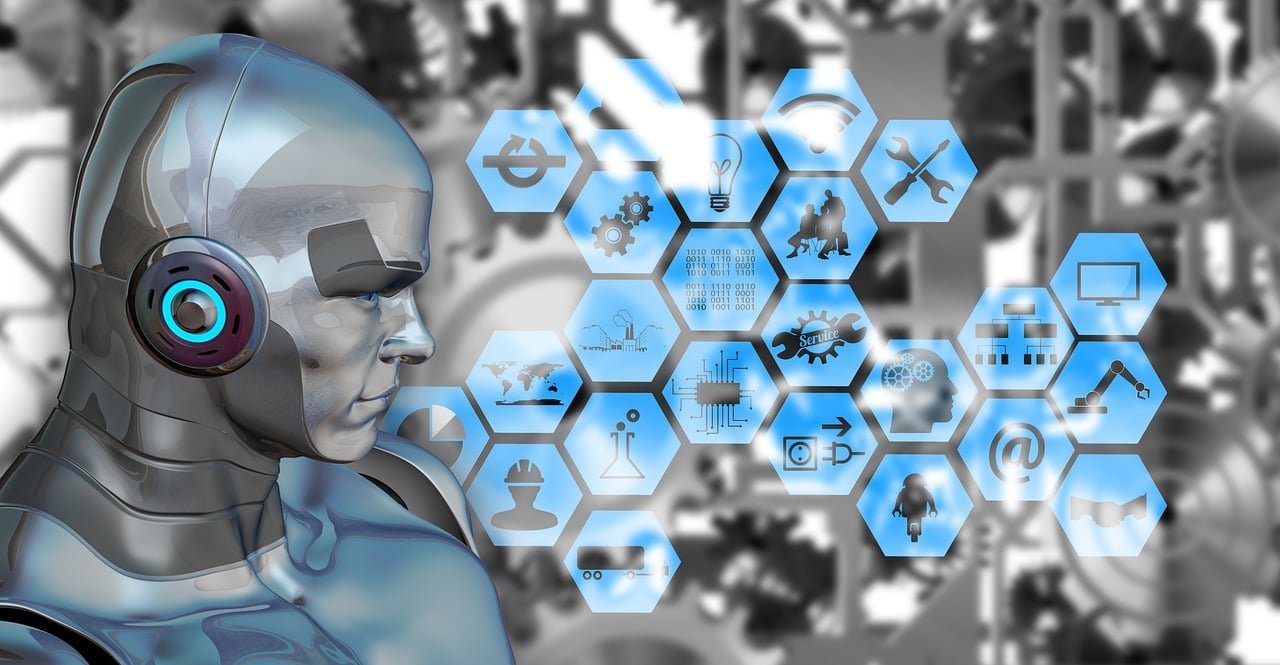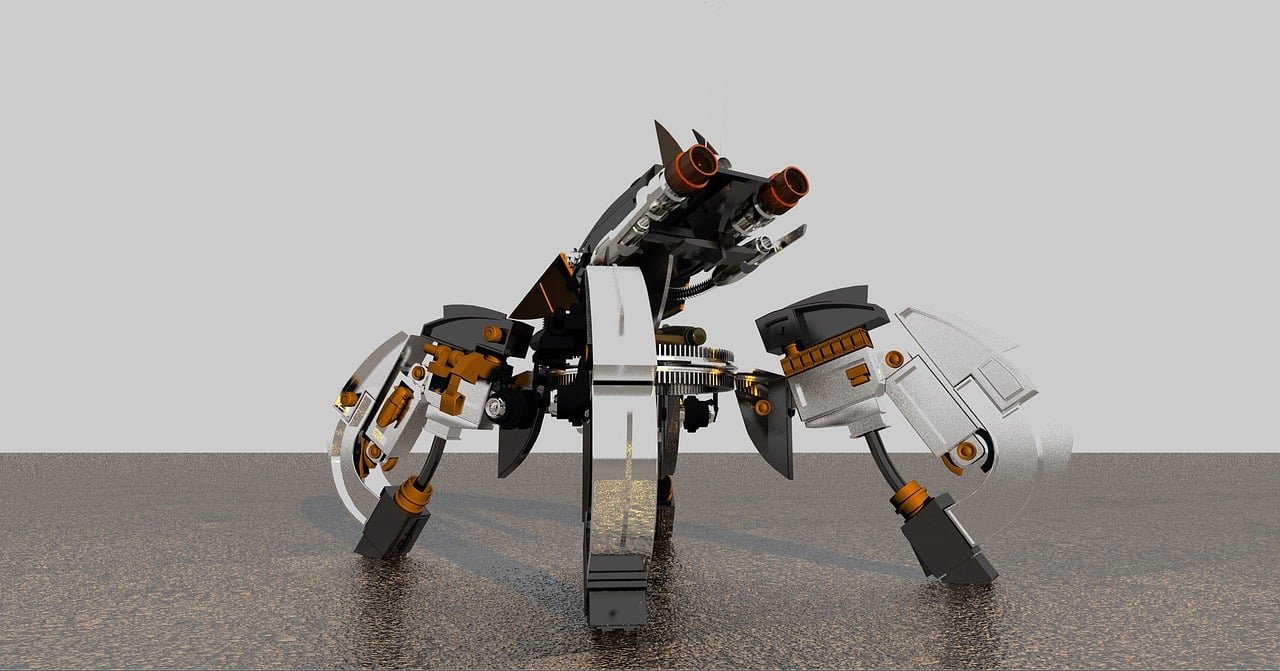How Are Robots Programmed: A Complete Guide to Robotics Programming
Published: March 19, 2025

How are Robots Programmed From healthcare to manufacturing, robotics has revolutionized industries for decades and is part of our modern society. The ability of robots to complete tasks with precision can be a massive asset across many industries. However, have you considered how robots are programmed to accomplish these complex tasks? The process of programming robots is fascinating and vital simultaneously. For example, understanding how robots are programmed extends beyond the engineers and developers to encompass anyone interested in the latest developments in robotics.
In this article, we take a significant step towards identifying the robot’s components. We will look into the different methods and tools used to program robots, whether high-level programming languages, advanced methods such as teaching pendants, or offline or online programming. We will also offer helpful tips on the best way to program a robot, regardless of whether you’re a novice or an experienced programmer. We will provide one complete guide for anyone interested in learning how robots work.
What gives the robots the capability to determine what it is that they need to accomplish? In case you are planning on venturing out into the field of robotics or if you have a keen interest in technology, then this article is tailored just for you. This article aims to explain the fundamentals and the sequence of actions of robotic programming. Through this book, you will discover the various types of robots, the languages of programming, and how to instruct the robot to perform specific tasks. When you finish the article, you’ll be able to understand the programming of robots and how you can get involved in this field.
Table of Contents
- What Is Robot Programming?
- Types of Robots
- How to Get Started with Robot Programming
- Popular Robot Programming Languages
- Common Methods of Robot Programming
- Teach Pendant Programming
- Offline Programming
- High-Level Robot Programming
- Difference Between an Arduino and a Raspberry Pi
- Real-World Examples of Robot Programming
- Final Thought
1-What is robot programming?
How are Robots Programmed is the creation of a precise sequence of actions that a robot has to execute. Like a human performing the task needs a stable sequence of steps and procedures, robots must also follow specific steps to perform at their best. Most commands are performed using various programming languages in which the actions expected that the machine will perform, as well as its movements and interactions with the environment and its responses to its surroundings, are defined.
Robots’ programming can vary from simple walking commands to more sophisticated systems that incorporate learning. The whole class of robots comprises simple machines such as robotic vacuums and more sophisticated industrial robots found in factories specialized in precise tasks like welding, assembly, or painting. Whatever their level of complexity, they all require programming to function.
How are Robots Programmed There are various methods for programming robots. Each one differs according to the purpose of the machine, its design, and the skills of the programmer responsible. In the following sections, we will review the most well-known methods and tools for programming robots.
2-Types of Robots
How are Robots Programmed Let’s shift our attention to different kinds of robots. It is a given that robots come with distinct bodies and features that fulfil specific tasks. The most common classifications are:
1. Industrial Robots
How are Robots Programmed Industrial robots are the most important and accurate machines. They are commonly used in factories to do monotonous high volume work activities. Robots are mostly found in warehouses and factories due to their speed and accuracy, and they can perform mechanical functions
.
2. Service Robots
Such robots function in the presence of human beings such as inside hospitals, homes, and even restaurants. In a healthcare facility, some robots can assist with medication delivery, and in restaurants, service robots can deliver orders to customers.
3. Autonomous Mobile Robots
How are Robots Programmed These robotic machines carry out activities in a dynamic setting by themselves. AMRs are extensively utilized in the logistics sectors where materials need to be shipped to a factory or warehouse. In those circumstances, AMRs autonomously traverse the area to perform deliveries.
4.Bipedal Robots
These robots operate on two legs and are provided with basic functions for speech and movement. Bipedal robots are mostly used in research, or in areas where direct human interaction is necessary, such as for an assistant.
How are Robots Programmed Strategies for programming applications differ between different types of robots based on the robot’s capabilities and functions. This article will present ways to apply these techniques to various robotic devices. It is necessary to reiterate that you need to change your methods according to the specific robot you are dealing with.
3-A Guide to Starting on Robot Programming

How are Robots Programmed In case you don’t have any experience with robotic programming, approaching it for the first time can be overwhelming.. But don’t fret Setting up programming for simple robotics and industrial automation requires a particular set of steps, and you won’t lose your way. These tips are geared towards those who are new to programming:
1. Understand Computer Languages
Without prior knowledge in coding, one should not try programming bots. Programming languages that are common within robotics industries include, Python, C++, and JavaScript.. If you can comprehend programming, you’ll be prepared to tackle specific robotic programming.
2. Selecting the Robot and Equipment
How are Robots Programmed You’ll need to choose the tools to program the robot you’re programming. For instance, when working with Arduino and Raspberry Pi robots, it is essential to master the programming environment for that specific model. Specialized industrial robots may require hardware and software that is not included in the industrial robot programming specialists.
3. Know the Tasks the Robot Will Perform
How are Robots Programmed Think about for a while what tasks you want your robot to perform. Do you want to program your robot to grasp objects, move around a space, or carry out something requiring skill and precision? Understanding what the robot must perform will help develop more efficient programs that yield quicker results.
4-Popular Robot Programming Languages
How are Robots Programmed Linguistically, just as humans have transcended spelling systems, robots’ programming languages are ways by which they can receive instructions and then act upon the instructions. Here are the most common languages used in the world of robotics:
1. C++
C++ is among robotics’s most widely used languages due to its speed and effectiveness. Real-time applications, like controlling the movement of industrial robots, come to mind.
2. Python
How are Robots Programmed Though Python is not as efficient as C++, it is often appreciated in the field of robotics for its simplistic approach towards novice programmers. Python is currently being employed to facilitate AI-automated scripting and automation, as well as robot controlling.
3. “Robot Operating System
How are Robots Programmed ROS Framework is open source and created to facilitate robot control. It is not a programming framework. It benefits advanced systems and comes with a wealth of tools and resources to assist in managing the robot.
5-Common Methods of Robot Programming

How are Robots Programmed The method used to program an automated robot varies depending on the robot’s model and the degree of expertise it has. We’ll look at some of the most popular methods used in the field today.
1. Lead-through Programming
How are Robots Programmed It is a simple procedure that requires no effort to program. The user guides the robot through predetermined sequences of motions that are captured and stored by it in tasks. The robot can recall the tasks as required. This is a great method for helping with basic industrial tasks.
2. Teach Pendant Programming
How are Robots Programmed The technique incorporates the use of a handheld controller which is used to control the movement of the robot at the users’ discretion. Only those movements recorded in the robot’s memory are used as tasks are carried out. This technique’s ease of operation has led to it becoming a standard for the majority of industrial robots in use today.
3. Offline Programming
Offline programming is a process performed on a computer but without current involvement from the robot. This function allows the programmer to create and develop new programs without having to put on hold the task that the machine is doing. Once the program is developed and loaded onto the robot, it will execute the program.
4. High-Level Programming
How are Robots Programmed In high-level programming, the advanced algorithms to control robots’ motions are designed using Python and C++. This applies to the advanced robotics integrations with AI where decision-making autonomy is needed.
6-The Difference Between an Arduino and a Raspberry Pi

How are Robots Programmed For robotics novices, the two most recognized boards are Raspberry Pi and Arduino. They both boast impressive functionality, but they cannot be used together.
1-Arduino
Arduino serves as an ideal platform for electronics projects and basic robots since it is a microcontroller based system. Furthermore, the platform has the ability to program in C and C++ effortlessly. It also performs well with low powered projects that do not require any processing advanced tasks.
2-Raspberry Pi
How are Robots Programmed On the contrary, Raspberry Pi serves as a mini computer that is equipped with a fully functioning operating system based on Linux.It is more efficient in processing capabilities than Arduino and is ideal for projects with large computational power or graphic user interfaces (GUIs).
Both platforms have strengths and are extensively used in robotics, depending on the difficulty of the job at hand.
7-Real-World Examples of Robot Programming
How are Robots Programmed Practical applications of automated robotic processes (RPA) can make the concept of robotic programming more concrete. Examples include:
- Factory-automated robots are robotic arms equipped with advanced devices that perform mechanized, repetitive welding and component making. These robots are programmed to do specific jobs, and specific control methods, like lead-through programming or methods to teach pendants, are frequently employed.
- Computer Vision System for Automated Guided Vehicles AMRs Operating within Warehouses The AMRs present in warehouses are usually constructed using sophisticated programming languages at the system level like Python and C++. They can internally transport and drop off items within the warehouse.
- Humanoid Robots – These robots are capable of talking and doing physical tasks by understanding AI through human interaction.. They incorporate AI and advanced machine learning in addition to traditional computer programming languages.
Final Thought
How are Robots Programmed? With the rapid growth of robotics and the scope of almost all fields of research and programming, utilizing information gained from understanding the fundamentals of robot programming can be beneficial. From developing robots as essential as controlling fundamental movements to fully autonomous machines, each project will require a thorough understanding of the available tools and methods. These are the top most advised takeaways:
Start with learning programming languages like Python, C++, Java.
Also try to eliminate distractions and focus on picking out the right robotics and tools needed for the specific tasks.Test other programming techniques, such as offline programming, lead-through programming, and teaching programming with pendants.
Recognize the limitations and scope of possible possibilities using an Arduino or Raspberry Pi.
Never underestimate the significance of artificial intelligence in robotics today.
If you follow these guidelines and apply the proper methods, you’ll be on the right path towards the success of robot automation for various purposes. From novices to experts, anyone can profit from the power of innovation and creativity and discover the possibilities of creating robots.
FAQ
1. What Is Robot Programming?
Robot programming involves creating code that automates functions in an autonomous robot without human interference, as determined through specific jobs or external factors.
2.Which programming language is the most popular in robotics?
Less experienced users might find it easier to use Python or C/C++, Java, or visual programming languages like Scratch for more complicated robotics projects.
3. What steps should I take to get robot programming started?
To learn robotic programming, start with an introductory programming language like Arduino or Raspberry Pi platforms.to succeed.
4. What Is Teach Pendant Programming (TPP) in Industrial Automation?
In industrial applications employing TPT programming, the robot’s actions and motion are manually guided, and its position is captured using a portable tool which can later be utilized in automation.
5-What is the distinction between offline and online programming?
With offline programming, a robot can be programmed from a distance unlike real time online programming which happens in the presence of the robot operating thus creating more active programming sessions..

- Be Respectful
- Stay Relevant
- Stay Positive
- True Feedback
- Encourage Discussion
- Avoid Spamming
- No Fake News
- Don't Copy-Paste
- No Personal Attacks



- Be Respectful
- Stay Relevant
- Stay Positive
- True Feedback
- Encourage Discussion
- Avoid Spamming
- No Fake News
- Don't Copy-Paste
- No Personal Attacks





